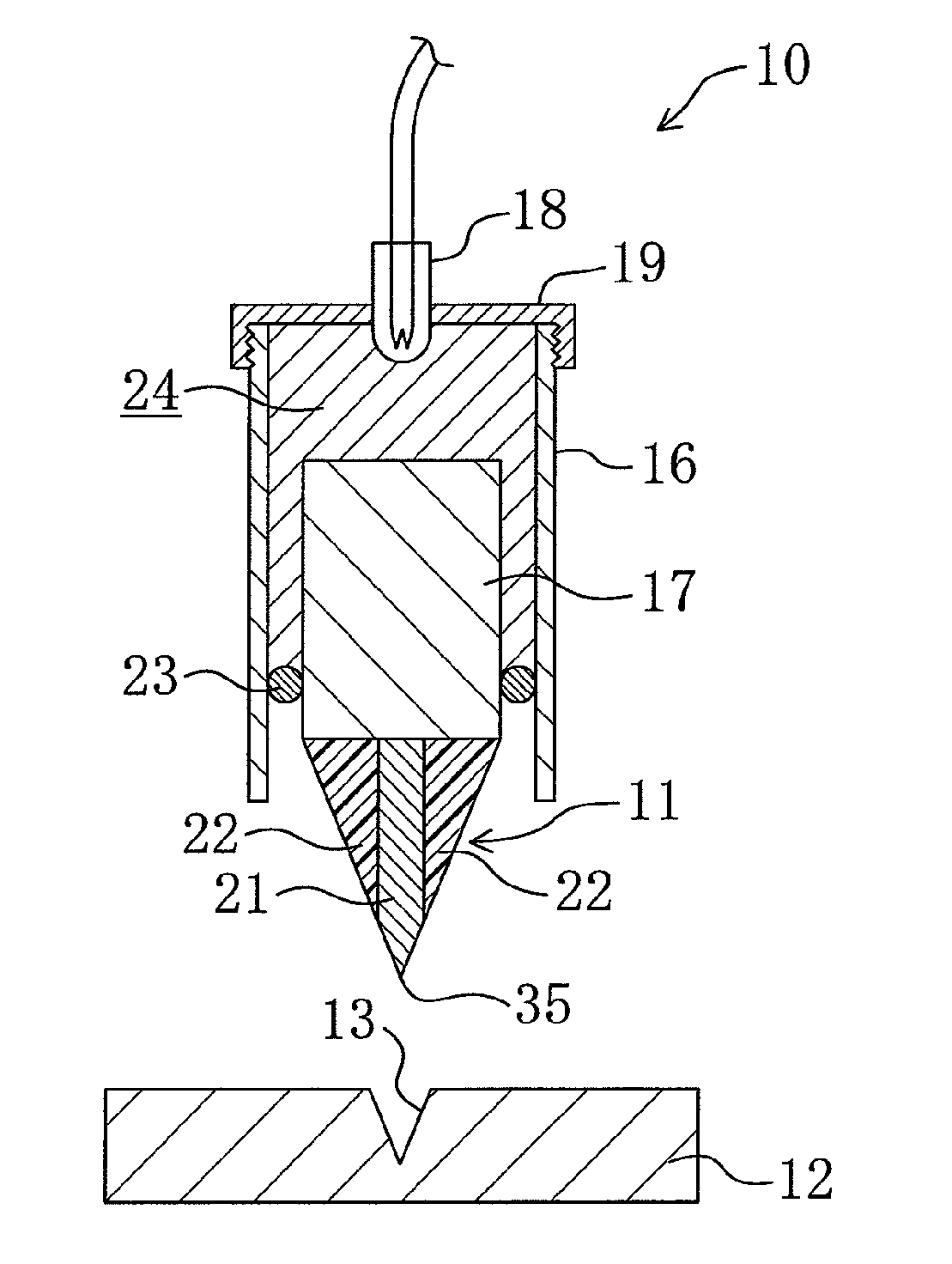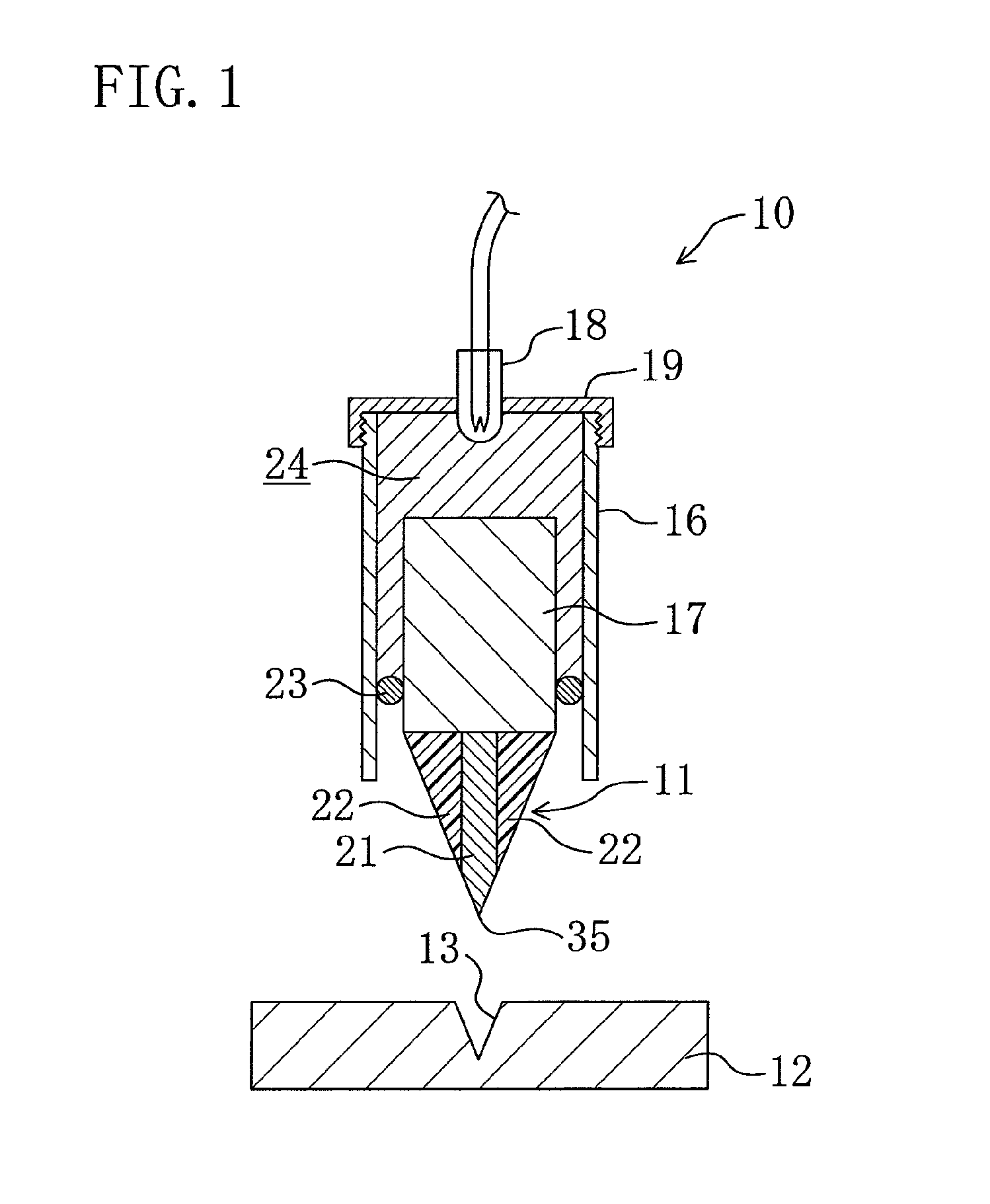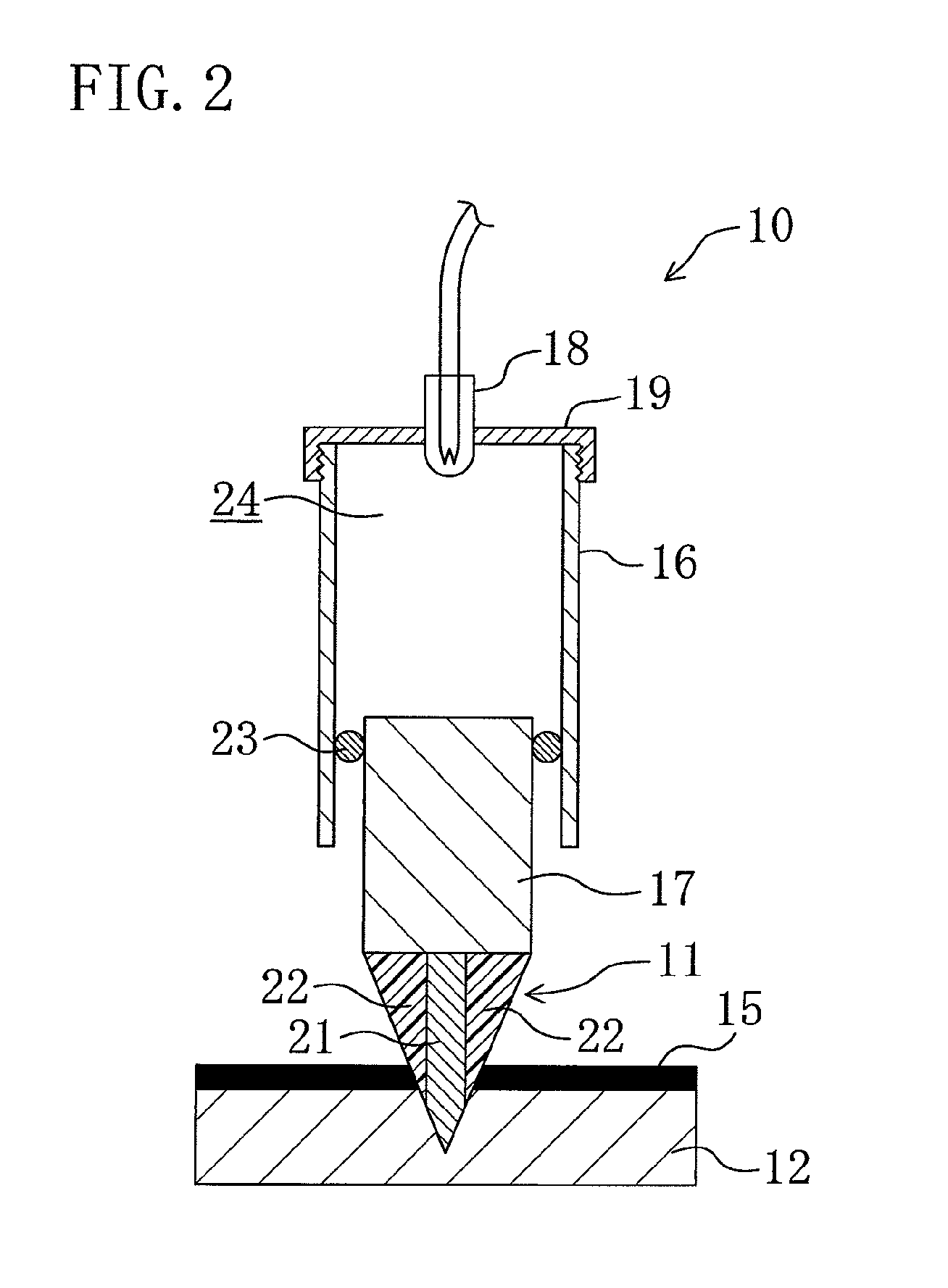Cutting apparatus, breaker, contactor, and electrical circuit breaker
a cutting apparatus and circuit breaker technology, applied in metal working apparatus, contacts, manufacturing tools, etc., can solve the problem that the cutting apparatus cannot be used to cut relatively rigid electrical wires, and achieve the effect of simplifying the configuration of the cutting apparatus (10) and being convenient to pla
- Summary
- Abstract
- Description
- Claims
- Application Information
AI Technical Summary
Benefits of technology
Problems solved by technology
Method used
Image
Examples
first embodiment
[0091]A first embodiment of the present invention will be described below.
[0092]The first embodiment is a cutting apparatus (10) according to the present invention. The cutting apparatus (10) is configured to advance a blade (11) by using a high pressure gas generated by a reaction of a gas generating agent. This cutting apparatus (10) is of a type that uses an explosive as the gas generating agent configured to generate a high pressure gas.
[0093]Specifically, as shown in FIG. 1, the cutting apparatus (10) of the first embodiment includes the blade (11), a cylindrical member (16), a piston (17), and an ignition portion (18). The ignition portion (18) is formed by a blasting cap.
[0094]The cylindrical member (16) has a cylindrical shape. The upper part of the outer peripheral surface of the cylindrical member (16) is threaded. A lid member (19) having a threaded inner peripheral surface is screwed on the upper part of the cylindrical member (16). The lid member (19) closes the upper e...
second embodiment
[0110]A second embodiment of the present invention will be described below.
[0111]Like the first embodiment, the second embodiment is a cutting apparatus (10) according to the present invention. As shown in FIG. 4, the cutting apparatus (10) of the second embodiment includes a blade (11), a cylindrical case (16), a blade stop portion (32), and an ignition portion (18). The ignition portion (18) is formed by a blasting cap. The cutting apparatus (10) is configured to advance the blade (11) by using a high pressure gas generated by detonation of a gas generating agent (an explosive) in a gas generating chamber (24) that is formed on the base end side of the blade (11) in the cylindrical case (16).
[0112]Note that, in the description of the second embodiment, one end of the cutting apparatus (10) refers to the end located on the upper side of the figure, and the other end of the cutting apparatus (10) refers to the end located on the lower side of the figure. The same applies to modifica...
third embodiment
[0170]A third embodiment of the present invention will be described below.
[0171]The third embodiment is a breaker (50) having a cutting apparatus (10) according to the present invention. As shown in FIG. 17, the breaker (50) includes a load terminal (55), a power supply terminal (54), and an inter-terminal member (51), which are provided in a resin casing (not shown). The inter-terminal member (51) is a member formed by a current-carrying member (15), and configured to connect the load terminal (55) and the power supply terminal (54).
[0172]The inter-terminal member (51) includes a fixed contact (52) connected to the load terminal (55), and a movable contact (53) connected to the power supply terminal (54). The movable contact (53) is provided so as to be movable between a contact position where the movable contact (53) contacts the fixed contact (52), and a non-contact position where the movable contact (53) is separated from the fixed contact (52). When the movable contact (53) mov...
PUM
| Property | Measurement | Unit |
|---|---|---|
| cylindrical shape | aaaaa | aaaaa |
| pressure | aaaaa | aaaaa |
| circumference | aaaaa | aaaaa |
Abstract
Description
Claims
Application Information
 Login to View More
Login to View More - R&D
- Intellectual Property
- Life Sciences
- Materials
- Tech Scout
- Unparalleled Data Quality
- Higher Quality Content
- 60% Fewer Hallucinations
Browse by: Latest US Patents, China's latest patents, Technical Efficacy Thesaurus, Application Domain, Technology Topic, Popular Technical Reports.
© 2025 PatSnap. All rights reserved.Legal|Privacy policy|Modern Slavery Act Transparency Statement|Sitemap|About US| Contact US: help@patsnap.com



